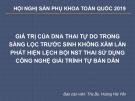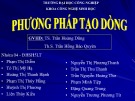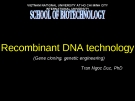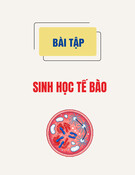
Ch ng 4ươ
Đ T BI N NHI M SĂC THỘ Ế Ễ Ể

N i dung chínhộ
1. Đ t bi n c u trúc NSTộ ế ấ
–L p đo nặ ạ
–M t đo nấ ạ
–Đ o đo nả ạ
–Chuy n đo nể ạ
1. Đ t bi n s l ng NSTộ ế ố ượ
–Đa b i hoáộ
–L ch b i hoáBB t ho t c a NST Xệ ộ ấ ạ ủ

Hi n t ng l ch b i (aneuploidy)ệ ượ ệ ộ
•Nguyên nhân và c chơ ế


Hi n t ng l ch b i ng iệ ượ ệ ộ ở ườ



![Bài giảng Kỹ thuật DNA và công nghệ sinh học [mới nhất]](https://cdn.tailieu.vn/images/document/thumbnail/2022/20220110/trollhunters/135x160/9101641828200.jpg)










![Bài tập Đa dạng thế giới sống [kèm đáp án/ hướng dẫn giải]](https://cdn.tailieu.vn/images/document/thumbnail/2025/20251123/thaohoang9203@gmail.com/135x160/5861763951302.jpg)











